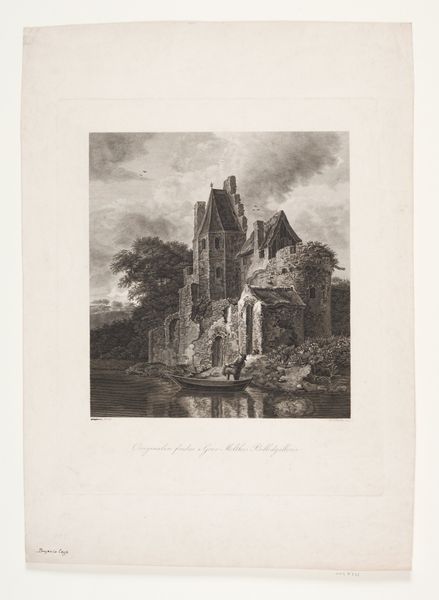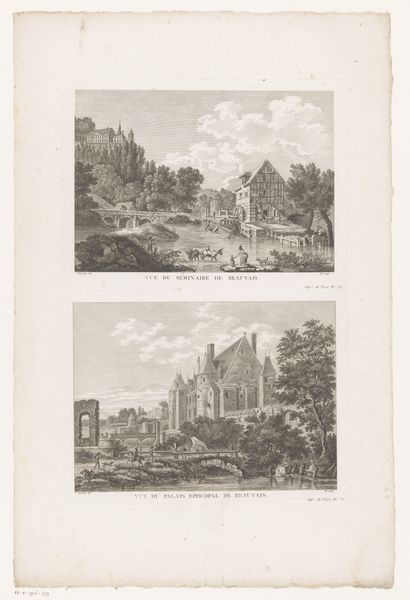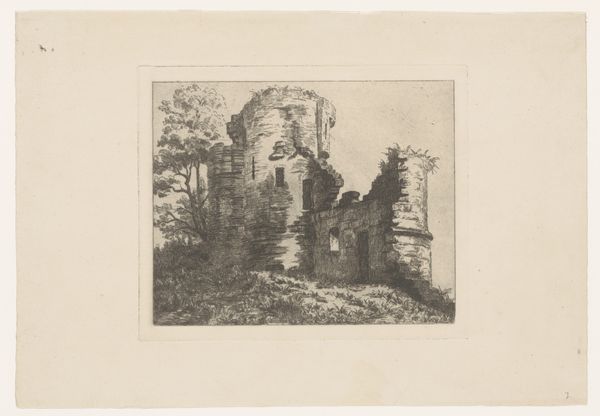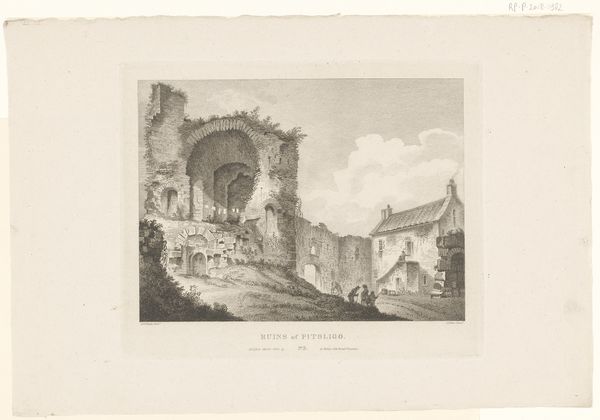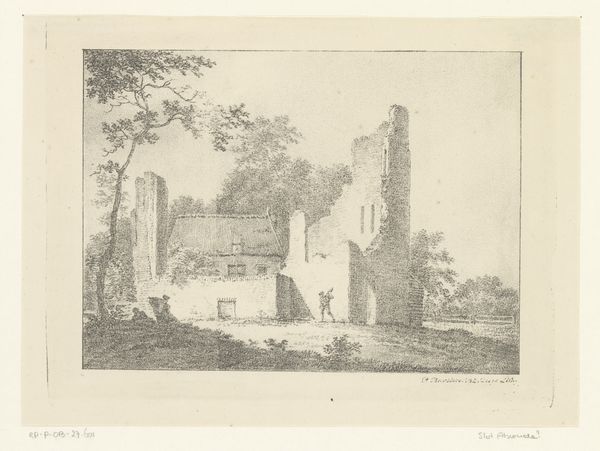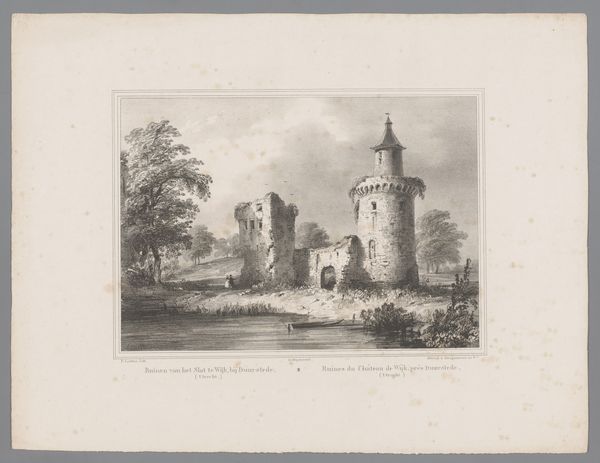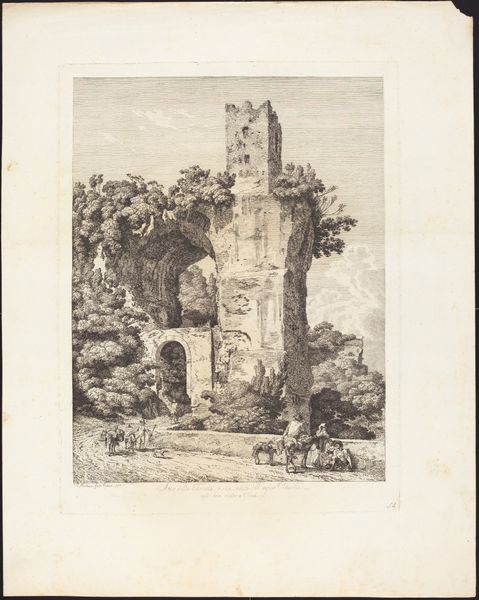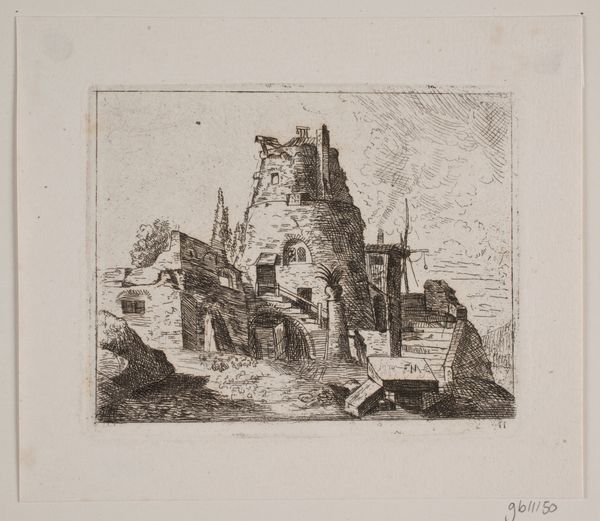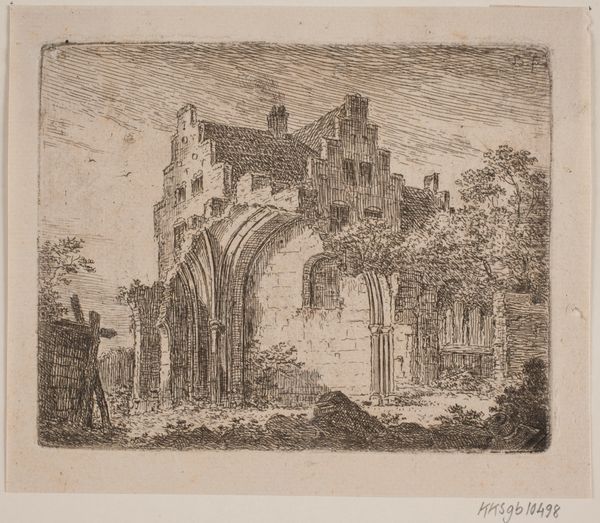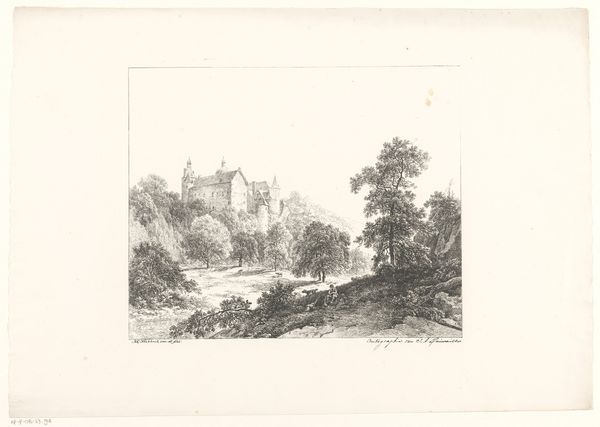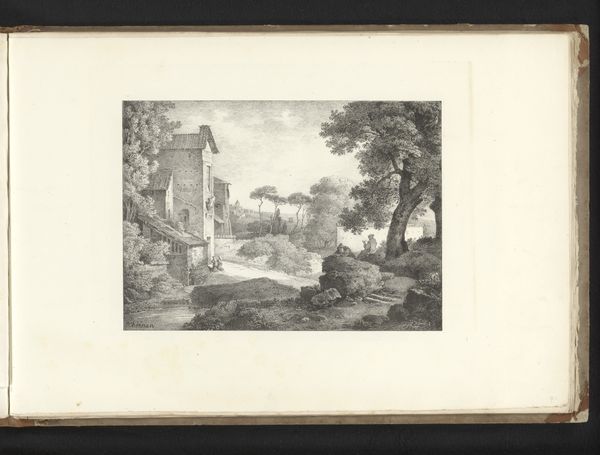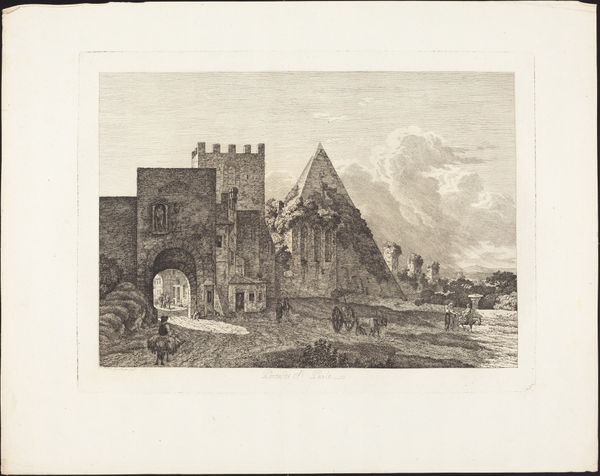
print, engraving
# print
#
landscape
#
form
#
romanticism
#
history-painting
#
engraving
#
realism
Dimensions: 370 mm (height) x 303 mm (width) (plademaal)
Curator: This print, attributed to Peter Christian Schøler, is entitled "Borgruin ved en flod," or "Castle Ruins by a River." Created sometime between 1803 and 1835, it’s a striking example of early 19th-century Danish Romanticism, held in the collection of the SMK, the National Gallery of Denmark. Editor: Oh, a ruin. Always good for a bit of brooding! It’s the kind of place I'd want to sit, journal in hand, and write terrible poetry about the passage of time. Curator: Indeed. Romanticism often used ruins as symbols of decay, reflecting on the fleeting nature of human achievements. Schøler's print employs a very precise, realistic technique for an engraving. You see how the light plays across the stonework? Editor: Absolutely! It's delicate, like dust motes dancing in a forgotten room. And I like the way the river mirrors the building, creating a doubling effect, almost as if time is bending in on itself. Gives me a delightful sense of melancholy, honestly. Curator: Precisely the intended effect, I would say! But consider the historical context: the print would have circulated in a society grappling with shifting national identities. Images of past grandeur could inspire both nostalgia and a renewed sense of purpose. Editor: Or, perhaps, inspire a wave of ambitious restoration projects. Who wants to live next to an old, crumbly anything? Get those masons in! Seriously, though, seeing the tiny figure in the boat emphasizes how humanity continues. The human spark just keeps finding new vessels. Curator: A compelling thought. The inclusion of people allows the artwork to hint at the theme of history, offering a view of the present, which is inseparably associated with the past. Editor: So, in the end, both artists and historians share a common purpose: looking to the past in order to inform and inspire present discussions. Curator: Nicely put. Schøler’s engraving presents a vision steeped in a particular moment, but still speaks eloquently to anyone who gazes upon it. Editor: Indeed, from castle to page, we witness an interesting transfer.
Comments
No comments
Be the first to comment and join the conversation on the ultimate creative platform.
